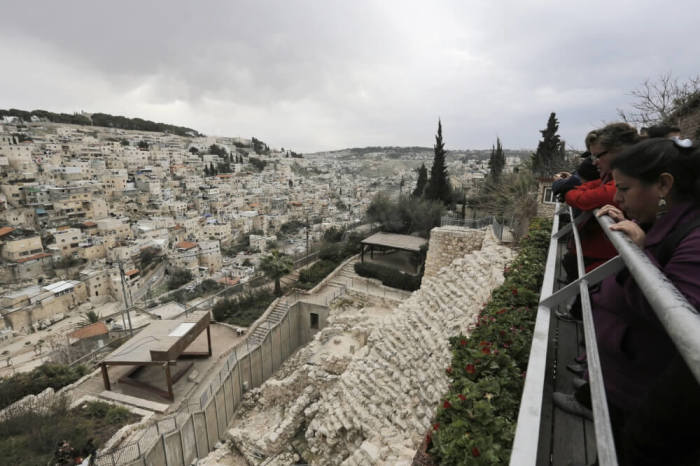Archaeology Discovery: 4,200-Y-O Canaanite Burial Ground Found Near Bethlehem

Archaeologists have confirmed the discovery of a 4,200-year-old necropolis dating back to pre-historic times in Bethlehem.
A team of Palestinian and Italian archaeologists recently uncovered the large cemetery, complete with over 100 tombs dating back to 2200 BCE to 650 BCE, at the site of Khalet al-Jam'a, located near Bethlehem.
While many of the tombs have been destroyed by looters, excavators say the discovery confirms there was a Canaanite town near Bethlehem that served as an important stop along a popular trade route.
"The finds confirm that there was a Canaanite town in Bethlehem. This had have never been proven before," Lorenzo Nigro, an Italian professor leading the excavation, told Haaretz.
According to the Times of Israel, the tombs, which cover an area of over 7 acres, were built to serve as the burial place for multiple family generations in accordance with Deuteronomy 31:16, which states that Moses will "rest with [his] ancestors."
While the large necropolis was originally discovered by construction workers in 2013, it is now just being excavated by the Italian and Palestinian archaeological teams.
Nigro wrote in the journal Vicino Oriente that the necropolis likely served as a burial site for a nearby settlement.
The location's "long-lasting utilization, over a millennium and a half or more, and the large number of tombs, suggest that Khalet al-Jam'a was the necropolis of a major settlement in the area, possibly a town," Nigro, who also serves as a professor at Sapienza University, wrote in the journal, as reported by Discovery News.
Nigro added that some of the exotic and expensive burial items found at the necropolis indicate that the settlement was likely a wealthy one with easy access to major trade routes, as the community sat between the major cities of Jerusalem and Hebron.
"Typical pieces of the burial sets are finely executed carinated bowls, small shouldered jars/bowls with everted rim, one-spouted lamps, huge and well-refined Canaanite jars with two or four handles, as well as bronze daggers and spearheads," Nigro wrote.
Also discovered in the tombs were scarab amulets, axes, and pins meant for fastening fabric together.
Along with Canaanite findings in Palestine, there have also been recent discoveries dating back over 3,000 years in Israel.
Two weeks ago, a young Israeli boy found a clay figurine of a nude woman while hiking in Tel Rehov in the northeastern part of the country.
The figurine, which was created by pressing wet clay into a mold, dates back over 3,400 years. Archaeologists have said that this type of miniature statue is typical of Canaanite culture in the 15th to 13th centuries BCE.
Amihai Mazar, who oversees excavations at Tel Rehov, said in a press release in February that experts debate whether the small statue served as a figurine or an idol for the Canaanite people.
"Some researchers think the figure depicted here is that of a real flesh and blood woman, and others view her as the fertility goddess Astarte, known from Canaanite sources and from the Bible," Mazar said in a government-issued statement, as reported by The Christian Post last week.
"It is highly likely that the term trafim mentioned in the Bible indeed refers to figurines of this kind," Mazar said. "Evidently the figurine belonged to one of the residents of the city of Rehov, which was then ruled by the central government of the Egyptian pharaohs."





























